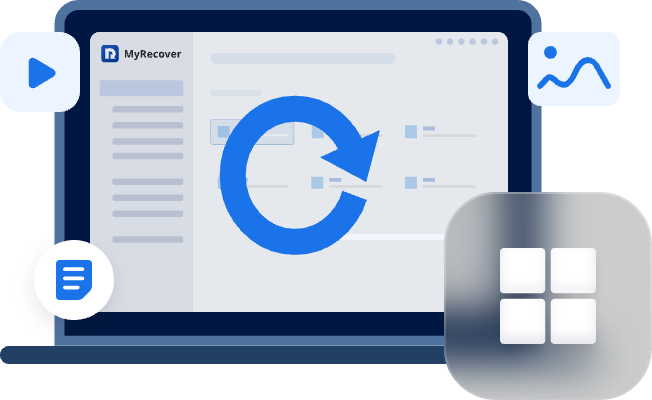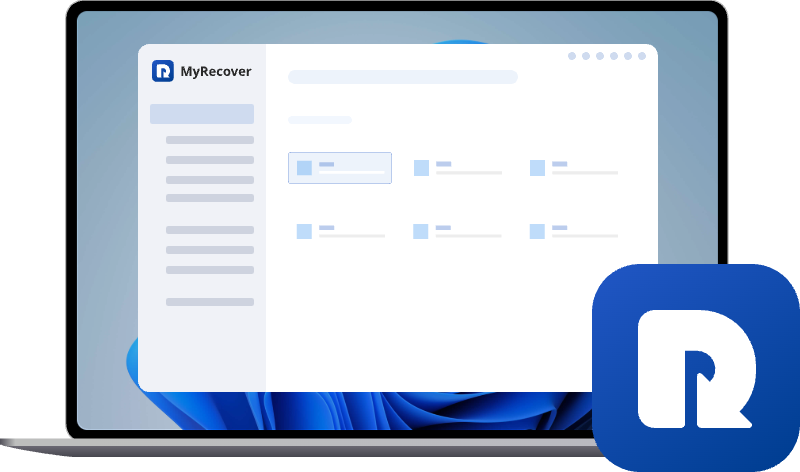How to Recover Data for FAT & NTFS & exFAT Drive in Windows 11, 10, 8, 7
If you accidentally deleted files or formatted a FAT/NTFS drive and look for a method to recover data from those drive, then you should never miss out this article, which covers the best ways to recover lost data from FAT32, NTFS and exFAT partitions on Windows 10/11, whether it's a hard disk drive, solid state drive, USB flash drive, or SD card.
FAT/NTFS File Systems Introduction
A file system organizes and manages data storage on devices like HDDs, SSDs, and USB drives. It structures files, directories, and metadata to ensure proper data access and integrity. Without a file system, data would be an unstructured collection of bytes, making retrieval nearly impossible. In Windows, the most commonly used file systems are “FAT32”, “NTFS”, and “exFAT”, each with unique benefits and limitations:
- FAT32 - The legacy file system with universal compatibility (cameras, game consoles, USB drives). Key constraints: 4GB max file size, no security features, prone to fragmentation. Best for removable media but offers no recovery protection.
- NTFS - Windows' modern standard featuring: unlimited file sizes, encryption, compression, and journaling for crash recovery. The optimal choice for internal drives, balancing security with robust data protection.
- exFAT - FAT32's successor eliminating the 4GB limit, optimized for flash storage (SD cards, SSDs). Tradeoffs: Faster performance but lacks journaling, complicating data recovery.
Common Causes of Data Loss on FAT and NTFS Drive
Prior to exploring methods to recover data for FAT and NTFS partition in Windows. Data loss scenarios vary in severity and recovery complexity, with three primary causes presenting distinct challenges:
1. Accidental Deletion
This most common form of data loss typically occurs when users manually delete files (Shift+Delete bypassing Recycle Bin) or when applications automatically purge temporary files. The system simply marks the storage space as available while the actual data remains intact until overwritten by new files.
2. Formatting Error
These occur when users intentionally or accidentally format a storage device, completely wiping its file system structure. A quick format only erases the index while leaving data recoverable, whereas a full format performs a complete wipe by writing zeros across the entire drive.
3. File System Corruption
When devices are improperly disconnected during write operations(common with USB drives), when sudden power failures interrupt data transfers, or when aging storage media develops bad sectors,file system corruption can occur. FAT32/exFAT are particularly vulnerable to such scenarios as they lack NTFS's journaling protection.
How to Recover Data From FAT & NTFS &exFAT Partitions in Windows 11/ 10?
Having identified the three primary causes of data loss across FAT and NTFS partitions, let's now explore reliable recovery methods tailored to each case- whether deletion, format, or file system corruption- to maximize your chances of successful data restoration.
Section 1: RestoreAccidentally Deleted Files in FAT/NTFS Systems
When files are deleted from your computer, the recovery process depends on how they were removed:
1. For Standard Deletions (Recycle Bin Recovery)
Files deleted normally will first go to the Windows Recycle Bin. Simply:
- Open the Recycle Bin.
- Locate your files.
- Right-click and select "Restore".
The files will return to their original locations on your FAT or NTFS partition.
2. For Permanent Deletions (Shift+Delete or External Drives)
Files bypass the Recycle Bin whenyou use Shift+Deletecombination to remove files or delete data from USB drives or memory cards. In these cases, Microsoft's Windows File Recovery can help. This official utilityhelp users recover deleted files from HDD, SSD, USB flash drive, SD card and those you cannot recover from Windows Recycle Bin. It is currently available for Windows 10 2004 and above.
- Download and install Windows File Recovery from the Microsoft Store, ensuring your system is running Windows 10 version 2004 or later.
- Launch Command Prompt as Administrator, as this is required to run the recovery tool with proper permissions.
- Understand the basic command structure "winfr source-drive: destination-drive: [/mode] [/switches]" - this forms the foundation for all recovery operations.
For recently deleted files, use the regular mode (/regular) which can quickly retrieve data that hasn't been overwritten.
Example: winfr H: D:\test /regular (Recovers recently deleted files from H: drive and saves them to D:\test folder.)
If you are trying to recover recently deleted files from FAT or exFAT drive, employ the extensive mode (winfr H: D:\test /extensive) for a comprehensive scan.
Both options require you to type "Y" when prompted to continue.
Section 2: Recover Data After Formatting FAT/NTFS Drives
If you accidentally formatted your FAT or NTFS drive, or were forced to format it due to certain circumstances (such as when the disk becomes unrecognizable and requires formatting), you can still recover data from FAT32 & NTFS partition using the Windows File Recovery tool, with extensive mode.
- Run Recovery in Extensive Mode: winfr C: D: /extensive
(Replace C: with the formatted NTFS or FAT drive, and D: with the recovery destination.)
- Filter Specific File Types (Optional): To recover only certain files (e.g., .docx, .jpg), add /nparameter:
winfr C: D: /extensive /n *.jpg /n *.docx
- Wait for scan & recovery. The process may take hours depending on disk size.Once done, recovered files will be saved in a "Recovery_[timestamp]" folder on the destination drive
Section 3: Retrieve Data from Corrupted FAT/NTFS Partitions
When a drive becomes corrupted—whether due to improper ejection, power failure, or bad sectors—data recovery becomes more complex. Windows File Recovery can still help, but success depends on the severity of corruption and the file system type. If the Windows File Recovery fails to recover data for corrupted FAT and NTFS drive, then use the CHKDSK command to first fix the errors.
The CHKDSK (Check Disk) utility is a built-in Windows tool that scans and repairs file system errors on disks. It can help fix corruption issues before attempting data recovery, but must be used carefully to avoid further data loss.
-
Only use this on NTFS; running chkdsk on FAT or exFAT may worsen corruption.
- Run chkdsk g: /f / r (replace g with the corrupted drive letter) command in the Command Prompt window.
- Alternatively, you can right-click the corrupted drive, select "Properties". Navigate to the “Tools”tab and click "Check" under "Error Checking".
After the errors are fixed,you can try the winfr command to recover files from NTFS partition.
MyRecover: The All-in-One Solution for NTFS & FAT Data Recovery
When the above methods did not help you to recover data from FAT or NTFS partition in Windows computer, then it’s time to turn to some professional drive data recovery software. For fast and successful data recovery result, try MyRecover. It is a comprehensive data recovery software designed to help users retrieve lost or deleted files from NTFS, FAT and exFAT file systems with ease.
MyRecover: Reliable Windows Data Recovery Software
✔️Recovers in Any Scenario: Handles various data loss scenarios including accidental deletion, formatting, system crashes, virus attacks and more.
✔️File Type Support: Recovers documents, photos, videos, emails, and other common file types.
✔️User-Friendly Interface: Simple navigation makes data recovery accessible to all skill levels. No technical expertise needed—just scan and recover.
✔️High Success Rate: Advanced algorithms ensure maximum file recovery potential.
✔️Multiple Scan Modes: Quick scan for recently deleted files and deep scan for comprehensive recovery.
So, just with this only one tool, you can easily recover files from formatted, deleted or corrupted FAT and NTFS drive.
Step 1. Download and install the freeware MyRecover.
Step 2. Select the FAT or NTFS drive, and click on "Scan", which will perform a quick scan by default.
Step 3. After the scanning process, you will see all recoverable files. If not, use "Deep Scan" instead.
Step 4. Choose target files or folders and click “Recover”.
Step 5. Select a safe location (not the original drive) to save the files.
Then wait for the process to complete. When it is done, a mini window will pop out to inform you how many files have been recovered successfully and where they are stored.
If you don’t see your FAT or NTFS partition for some reasons like corrupted file system, entire drive deletion, etc, the MyRecover can still help with the "Partition Lost Recovery". This feature can scan your entire system for deleted or lost partitions. Once founded, you can scan it and recover files as normal.
Final Thoughts
When facing data loss, themethods of recovering data for FAT & NTFS drivedepends on how the files were lost. While Windows File Recovery can handle most cases, its command-line interface presents challenges. For example, any incorrect commands or syntax errors like "There was an error parsing your command", "Winfr.exe is not recognized as an internal or external command" and others can easily derail your recovery efforts.
So, the MyRecover is more recommended. No matter how you lost your data - whether from accidental deletion, drive formatting, partition corruption (FAT32/NTFS/exFAT), or even complete partition loss making your drive invisible - MyRecover delivers powerful yet straightforward solutions to get your files back.


